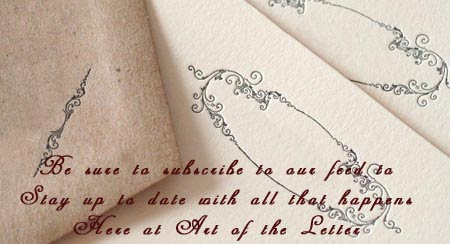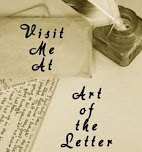Letters to the Future Queen, Kate Middleton's Postman Delivers Mail without an Address
 Imagine the future Kate as tender and tortured Queen of her castle. Decorated in pearls and ornate silk, bejeweled tiara atop an elaborate coiffure, taking her morning tea at some holdover gilded age writer’s table. Writing her daily letters shan’t be such a chore when she’s got someone to lick her envelopes, now, shall it?
Imagine the future Kate as tender and tortured Queen of her castle. Decorated in pearls and ornate silk, bejeweled tiara atop an elaborate coiffure, taking her morning tea at some holdover gilded age writer’s table. Writing her daily letters shan’t be such a chore when she’s got someone to lick her envelopes, now, shall it? True, the darling princess-to-be Kate Middleton has forevermore got it made, and as her local postman, Ryan Naylor, can attest, her world-wide popularity is burgeoning. Naylor has been hauling a "steady stream" of mail up the private drive to the home she shares with her family in rural Bucklebury, Berkshire ever since her November 16 engagement announcement to, the one equally adorable, Prince William.
True, the darling princess-to-be Kate Middleton has forevermore got it made, and as her local postman, Ryan Naylor, can attest, her world-wide popularity is burgeoning. Naylor has been hauling a "steady stream" of mail up the private drive to the home she shares with her family in rural Bucklebury, Berkshire ever since her November 16 engagement announcement to, the one equally adorable, Prince William.  Naylor, the postman, tells, "The post they've had is absolutely incredible, from all over the world. There are lots of well-wishers, sending cards and presents." Although the address remains a tightly kept secret, it is perfectly straightforward. When asked if trying 'Kate Middleton, Bucklebury' would work, "Absolutely right, and some of it's just addressed to Kate Middleton, England, but it still gets here, surprisingly,” he chuckles.
Naylor, the postman, tells, "The post they've had is absolutely incredible, from all over the world. There are lots of well-wishers, sending cards and presents." Although the address remains a tightly kept secret, it is perfectly straightforward. When asked if trying 'Kate Middleton, Bucklebury' would work, "Absolutely right, and some of it's just addressed to Kate Middleton, England, but it still gets here, surprisingly,” he chuckles.  "There was one this morning to 'Mike and Carole Middleton, Parents of Catherine Middleton, Bucklebury, Berkshire," he says as he jumps into his red van and heads out again on his rounds. "I joked with them about it. I said, ‘Look, it still gets through! What a good postman you've got!" One wonders if he received his holiday gratuity.
"There was one this morning to 'Mike and Carole Middleton, Parents of Catherine Middleton, Bucklebury, Berkshire," he says as he jumps into his red van and heads out again on his rounds. "I joked with them about it. I said, ‘Look, it still gets through! What a good postman you've got!" One wonders if he received his holiday gratuity.
 Here, and only a few weeks ago, on January 9, Kate Middleton arrives for the wedding of the Honourable Sarah Louise Stourton and Harry Aubrey-Fletcher at St. Andrew’s Church in Aldborough, North Yorkshire. Ever-stylish is Kate with her smart sense of fashion; she wears a revolving door of fascinators. In no exception, here she is in a beautiful black structural beret or tilted pillbox with a long and lovely feather quill fascinator with most of the vane barbs removed. In keeping with our lovely theme of antique writing implements here at Art of the Letter, the quill of her hat reminds us of a bygone era when our writing utensils were borne of shaved quills.
Here, and only a few weeks ago, on January 9, Kate Middleton arrives for the wedding of the Honourable Sarah Louise Stourton and Harry Aubrey-Fletcher at St. Andrew’s Church in Aldborough, North Yorkshire. Ever-stylish is Kate with her smart sense of fashion; she wears a revolving door of fascinators. In no exception, here she is in a beautiful black structural beret or tilted pillbox with a long and lovely feather quill fascinator with most of the vane barbs removed. In keeping with our lovely theme of antique writing implements here at Art of the Letter, the quill of her hat reminds us of a bygone era when our writing utensils were borne of shaved quills. Along with the beautiful fascinator, she wore a tailored Libelula velvet dress coat with silver clasp, plum colored shoes, matching clutch, and of course, Diana’s gorgeous rock.
Along with the beautiful fascinator, she wore a tailored Libelula velvet dress coat with silver clasp, plum colored shoes, matching clutch, and of course, Diana’s gorgeous rock.
The beautiful painting opening this post is entitled Princess Elizabeth in Prison at St. James' created by John Everett Millais. The poor little Princess Elizabeth (1635-1650), second daughter of King Charles I and Queen Henrietta Maria, was confined in St. James' Palace by order of Parliament when the English Civil War began in 1642. Elizabeth is represented here in 1850, after half of her life imprisoned, composing her touching letter to Parliament in which she begs for her loved servants to remain with her and to be allowed to join her sister, the Princess of Orange. Her letter proved moving enough for the previous and most cruel policy to be reversed. She was transferred to Carisbrook Castle on the Isle of Wight, when her brother, future Charles II, landed in Scotland with a liberating army. Sadly, Princess Elizabeth died 8 days after her trasfer, being only 15 years old.
Along with other lost gems of the ages, a small explanation of this painting with a lovely poem written to Millais by a young student about Millais' Elizabeth is contained in this book: The Life and Letters of Sir John Everett Millais: President of the Royal Academy, Volume 2.
Vols. 1 & 2 respectively, as follows:

Self portrait 1881 John Everett Millais (1829-1896)
Millais was a controversial and rebellious 19th century English painter and illustrator, and who does not love a little of the rebel? Known for his opposition to the modern methods of composition as taught in the art academies of the day, he was one of the founders of the Pre-Raphaelite Brotherhood.
Besides a bit of professional controversy over some of his paintings, he became a love magnet to Effie, the wife of his biggest outspoken supporter, social critic John Ruskin. Effie sought an annulment from her 6 year marriage to Ruskin, which turned up a salacious few tidbits about Ruskin himself in marriage annulment court, all feeding a tremendous scandal, a Victorian age "love triangle".
Listed on left is the book titled John Ruskin and Effie Gray: The story of John Ruskin, Effie Gray and John Everett Millais, told for the first time in their unpublished letters. There have been several dramatic features including films, plays, operas and radio programmes retelling the fascinating relationships of Millais, Ruskin and Effie. Further, a study of this this love triangle, of Effie & John Ruskin's unsatisfied marriage along with a study of its traumatic wedding night can be found in the book listed on right titled Parallel Lives: Five Victorian Marriages.


























